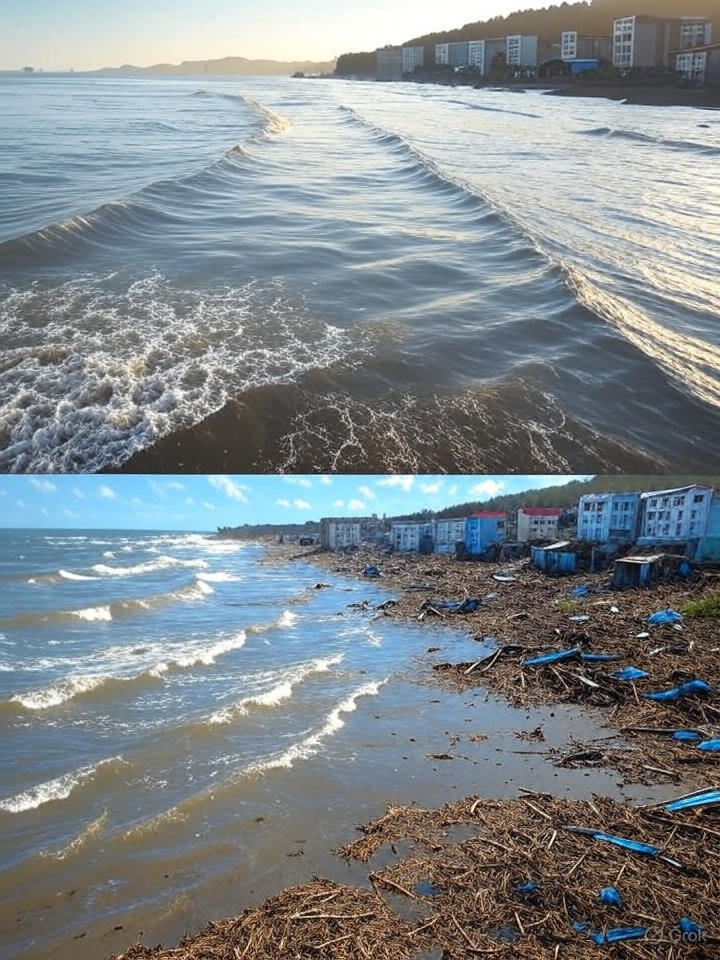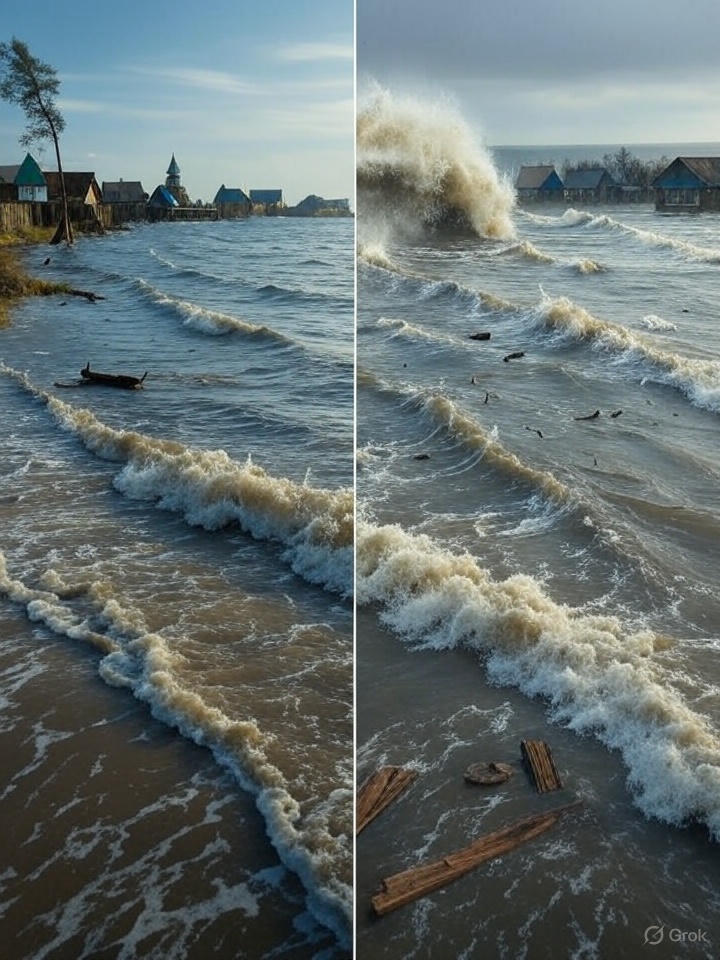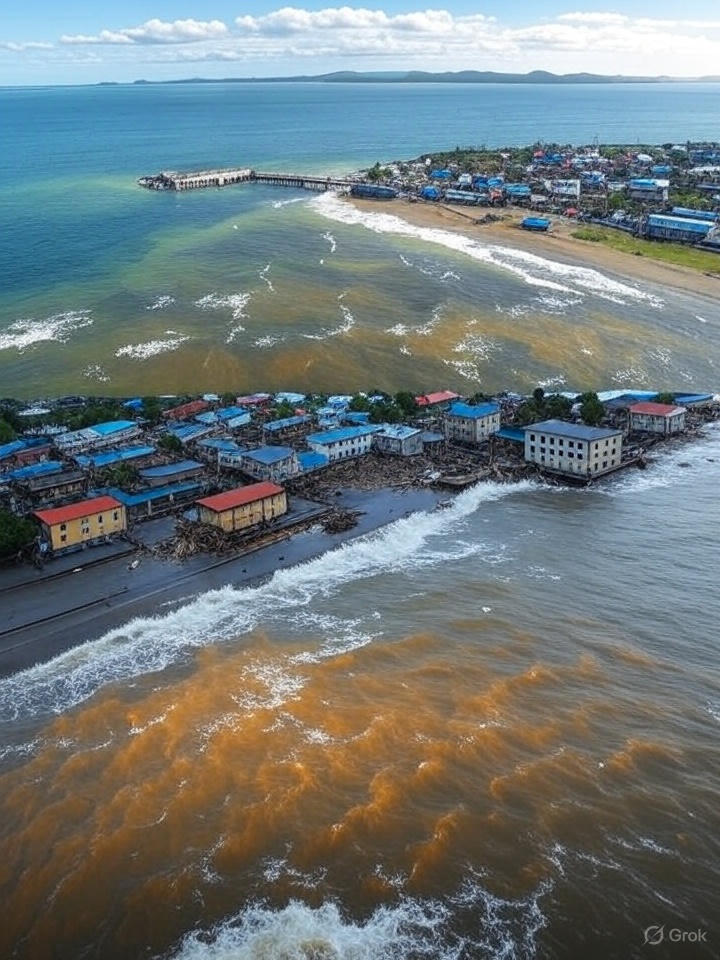Early on Sunday, July 20, 2025, a series of strong undersea earthquake struck off the coast of Russia’s Kamchatka Peninsula, prompting international concern and a tsunami warning that has since been lifted. This article analyzes the event, response, geological context, and implications—fully referencing credible news sources.
What happened
- Multiple quakes in quick succession: At least three earthquake occurred within approximately 30 minutes, the strongest recorded at magnitude 7.4, at 20 km depth, and located about 140 km east of Petropavlovsk-Kamchatsky (pop. ~180,000) (Al Jazeera). Other tremors measured around 6.7 and 5.0 (Al Jazeera).
- Initial tsunami warnings: The Pacific Tsunami Warning Center (PTWC) issued advisories for Russia and even extended a precautionary watch to Hawaii, Guam, and American Samoa—though those were later canceled (The Sun).
Threat Assessment & Warning Lifted
- Cautious alerts issued: Russia’s Emergencies Ministry urged residents of coastal villages to stay away from the shoreline until assessments could be made (AP News).
- Warnings downgraded quickly: The PTWC initially flagged the threat as serious, then downgraded, and finally cancelled all warnings. Russia’s national agencies confirmed there was no longer any tsunami risk (AP News).
- Aftermath: Fortunately, no casualties or structural damage have been reported. Authorities did not initiate evacuations or emergency relocations (AP News, euronews).
Geological Context: Kamchatka’s Seismic Legacy
The Kamchatka Peninsula lies along the Kuril–Kamchatka Trench, where the Pacific Plate dips beneath the Okhotsk microplate—part of the Pacific “Ring of Fire.” This zone routinely spawns high-magnitude earthquakes and tsunamis:
- Historical megaquakes: In November 1952, a massive 9.0‑9.2 Mₙₐ earthquake in the same area generated ~30-foot tsunami waves reaching Hawaii, yet caused no local fatalities (Al Jazeera, AP News).
- Past trigger events: The region previously experienced at least seven events ≥8.3 magnitude since 1900, including major tsunamis in 1841 and 1918 (Wikipedia).

Why the Warning Didn’t Become a Crisis
- Magnitude vs. displacement: Though large, a tsunami typically requires significant vertical seafloor displacement. Detailed seismic data showed these events had limited uplift, reducing tsunami potential (The Economic Times, Reuters).
- Monitoring and rapid response: The PTWC, US National Tsunami Warning Center, Russian agencies, and GFZ (Germany) coordinated swiftly, lifting warnings within a few hours.
- Public safety measures: Authorities advised residents to stay off beaches and move inland briefly, then relaxed control once safe (AP News, euronews).
Impacts & Follow-Up
- No physical damage: No reports of property loss or infrastructure issues.
- Ongoing monitoring: Seismologists continue tracking aftershocks and analyzing data to understand possible future hazards (euronews, The Economic Times).
- Community preparedness: Such episodes reinforce the value of early-warning systems, rapid data sharing, and public readiness protocols—especially for coastal communities in seismic zones.
Looking Ahead
- Constant vigilance: Kamchatka will remain under close observation for potential large aftershocks or triggered tsunamis.
- Regional implications: Even distant regions like Alaska, Japan, and Hawaii track seismic events here due to the potential for wave propagation across the Pacific.
- Small tremors matter: Although this event passed without incident, much smaller quakes can sometimes generate destructive tsunamis depending on location and ocean-floor displacement.
Conclusion
On July 20, 2025, the Kamchatka region experienced three major earthquakes—the strongest hitting magnitude 7.4—causing a temporary tsunami threat that was carefully managed and eventually deemed passed with no harm. This underscores the effectiveness of modern seismic monitoring, the critical need for public awareness, and the persistent seismic vulnerability of the Pacific Ring of Fire.


